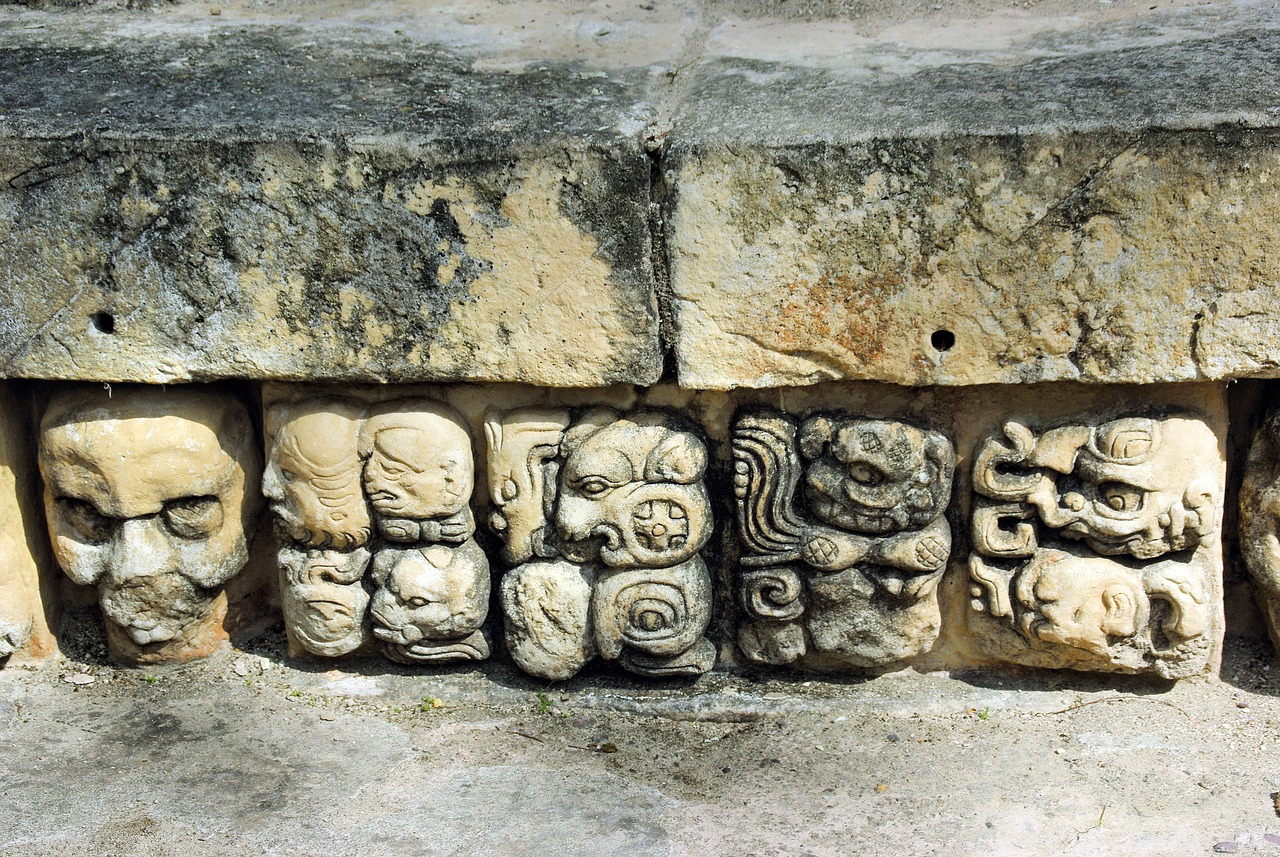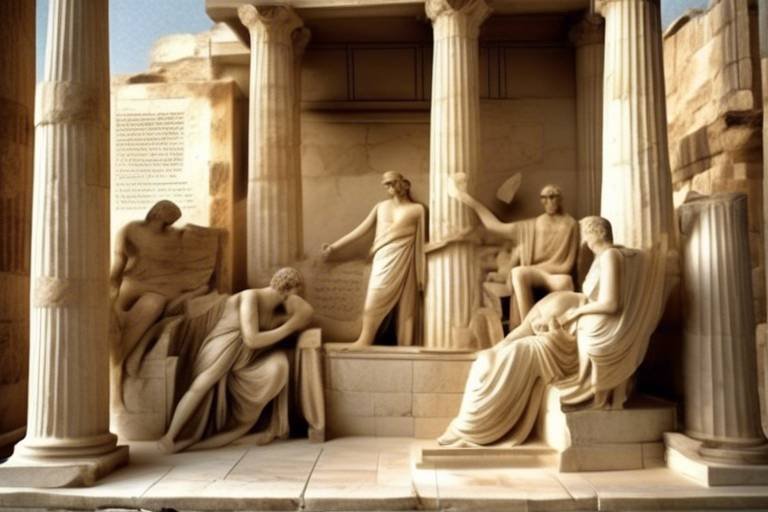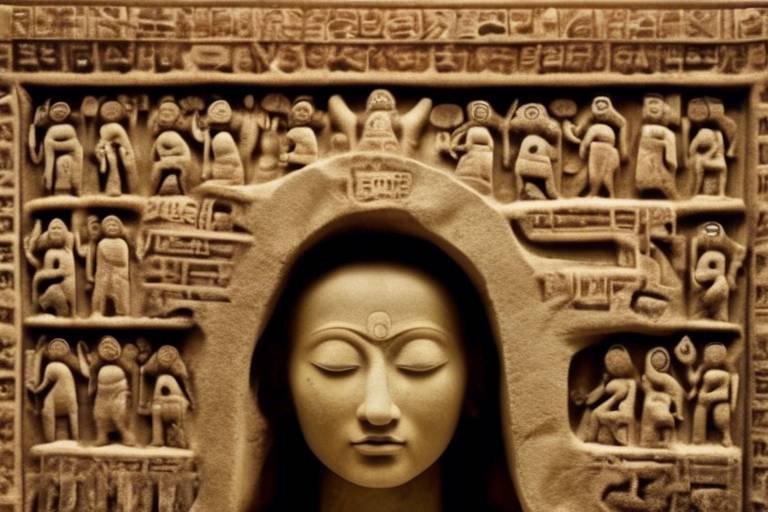The Evolution of Ancient Writing Systems
Have you ever wondered how ancient civilizations communicated through writing? The evolution of ancient writing systems is a fascinating journey that unveils the origins of modern writing as we know it today. From primitive pictograms to complex scripts, each civilization left its mark on history through unique methods of written communication.
Exploring the earliest forms of written communication reveals a world of cave paintings, petroglyphs, and other primitive methods that paved the way for sophisticated writing systems to develop. These foundational elements set the stage for the diverse range of writing systems that emerged across different ancient civilizations.
The intricate system of Egyptian hieroglyphics offers a glimpse into the symbolic meanings behind pictorial characters. Used by the ancient Egyptians to record historical events and religious beliefs, hieroglyphics showcase the artistic and storytelling prowess of this ancient civilization.
Uncovering the wedge-shaped characters of cuneiform script in Mesopotamia sheds light on the documentation of laws, treaties, and literature in one of the earliest writing systems known to humanity. The complexity of cuneiform script reflects the advanced societal structures of ancient Mesopotamia.
Chinese oracle bone script, originating in ancient China for divination purposes, evolved into the intricate Chinese writing system we see today. The journey from oracle bones to modern characters highlights the cultural continuity and innovation of Chinese writing over millennia.
Delving into Mesoamerican glyphs reveals the rich writing systems of civilizations like the Maya and Aztec. These complex symbols were used to record historical events, astronomical knowledge, and religious practices, offering a window into the vibrant cultures of ancient Mesoamerica.
The mysterious script of the Indus Valley civilization continues to intrigue scholars, with ongoing efforts to decipher the symbols found on seals and artifacts. The Indus Valley script represents a tantalizing puzzle that holds clues to the ancient civilization's language and culture.
Exploring the Phoenician alphabet as the precursor to modern alphabetic writing systems showcases its influence on scripts like Greek and Latin. The spread of literacy in the ancient world was propelled by the Phoenician alphabet, leaving a lasting impact on written communication.
Examining the enigmatic runic inscriptions used by Germanic peoples, including the Vikings, reveals a unique writing system found on stone monuments and artifacts. The cultural significance of these symbols in Northern Europe adds another layer to the diverse tapestry of ancient writing systems.

Origins of Writing Systems
The origins of writing systems can be traced back to the early forms of written communication used by ancient civilizations. These primitive methods, such as cave paintings and petroglyphs, served as the foundation for the development of more sophisticated writing systems. Imagine the awe and wonder of our ancestors as they first etched symbols onto rock surfaces, creating a means to communicate across time and space.
As human societies evolved, so did their need for more efficient methods of recording information. The transition from pictograms to complex scripts marked a pivotal moment in the history of written communication. It was a time of innovation and creativity, as ancient civilizations sought to capture the richness of their languages and cultures in written form.
Exploring the origins of writing systems allows us to glimpse into the minds of our ancestors and understand the cultural significance of written communication. From the earliest symbols etched in stone to the intricate characters of ancient scripts, each writing system tells a story of human ingenuity and creativity.

Egyptian Hieroglyphics
Exploring the development and transformation of written communication methods used by ancient civilizations, from early pictograms to complex scripts, shedding light on the origins of modern writing systems and their cultural significance.
Investigating the earliest forms of written communication, including cave paintings, petroglyphs, and other primitive methods that laid the foundation for the development of sophisticated writing systems.
The ancient Egyptians used a fascinating system of writing known as hieroglyphics. These intricate pictorial characters were not just symbols but held deep symbolic meanings, recording historical events, religious beliefs, and more. Imagine each symbol as a piece of a puzzle, coming together to tell a story carved in stone.
Uncovering the wedge-shaped characters of cuneiform script, originating in ancient Mesopotamia, and their significance in documenting laws, treaties, and literature, showcasing the complexity of one of the earliest writing systems.
Exploring the origins of Chinese characters in oracle bone script, used for divination purposes in ancient China, and tracing the evolution of these characters into the modern Chinese writing system.
Delving into the intricate glyphic writing systems of Mesoamerican civilizations such as the Maya and Aztec, deciphering the complex symbols used to record historical events, astronomical knowledge, and religious practices.
Investigating the mysterious script of the Indus Valley civilization, examining the symbols found on seals and artifacts, and discussing the ongoing efforts to decipher this ancient writing system.
Exploring the Phoenician alphabet as the precursor to modern alphabetic writing systems, tracing its influence on Greek, Latin, and other scripts, and highlighting its role in the spread of literacy in the ancient world.
Examining the runic alphabet used by Germanic peoples, including the Vikings, in inscriptions on stone monuments and artifacts, unraveling the meanings behind these enigmatic symbols and their cultural significance in Northern Europe.

Cuneiform Script of Mesopotamia
The Cuneiform script of Mesopotamia is one of the oldest known writing systems, dating back to around 3200 BC. This intricate system of writing utilized wedge-shaped characters impressed onto clay tablets using a stylus. The term "cuneiform" itself means "wedge-shaped" in Latin, aptly describing the appearance of the characters.
Originating in ancient Mesopotamia, particularly in the regions of Sumer, Akkad, and Assyria, cuneiform script played a vital role in documenting various aspects of society. It was used not only for recording administrative matters such as laws, treaties, and economic transactions but also for preserving literary works, religious texts, and historical accounts.
The complexity of cuneiform script lies in its combination of logographic, syllabic, and phonetic elements, making it a versatile writing system capable of representing different languages and sounds. Scholars have deciphered thousands of cuneiform tablets, providing valuable insights into the daily lives, beliefs, and achievements of ancient Mesopotamian civilizations.
One fascinating aspect of cuneiform script is its evolution over time, with different styles and variations emerging as it spread across Mesopotamia and influenced neighboring regions. The ability to adapt and evolve allowed cuneiform to endure for over three millennia, serving as a cornerstone of communication and record-keeping in the ancient Near East.
Studying cuneiform script not only unveils the intellectual achievements of ancient Mesopotamia but also highlights the interconnectedness of early civilizations through trade, diplomacy, and cultural exchanges. The decipherment of cuneiform tablets continues to shed light on the rich history and achievements of Mesopotamian societies, showcasing the enduring legacy of one of the world's earliest writing systems.

Chinese Oracle Bone Script
The Chinese Oracle Bone Script holds a fascinating history deeply rooted in ancient China's mystical practices. Dating back to the Shang dynasty around 1600-1046 BC, this script was inscribed on animal bones and turtle shells for divination purposes. The intricate characters carved into these oracle bones were believed to hold answers from the spiritual realm, guiding rulers in making important decisions such as harvest predictions, military strategies, and ritual ceremonies.
Each character in the Oracle Bone Script was meticulously crafted, combining pictographic elements with early forms of Chinese writing. These characters evolved over time, eventually shaping the foundation of the modern Chinese writing system. The complexity and symbolism of the Oracle Bone Script reflect the rich cultural and spiritual beliefs of ancient Chinese society, providing a glimpse into their worldview and practices.
Deciphering the Oracle Bone Script has been a challenging yet rewarding endeavor for archaeologists and linguists. By studying thousands of inscriptions on oracle bones, researchers have unveiled the meanings behind these ancient characters, shedding light on the rituals, beliefs, and historical events of the Shang dynasty. The Oracle Bone Script serves as a crucial link between China's ancient past and its contemporary language and culture.

Mesoamerican Glyphs
Mesoamerican Glyphs refer to the intricate writing systems developed by ancient civilizations such as the Maya and Aztec. These glyphs were not mere symbols but rather complex characters used to record a wide range of information, including historical events, astronomical knowledge, and religious practices. The glyphs were meticulously crafted and held significant meaning within the cultural context of these civilizations.
One fascinating aspect of Mesoamerican Glyphs is their ability to convey rich narratives and detailed information through a combination of symbols and pictorial representations. Each glyph was carefully designed to represent specific concepts or ideas, allowing scribes to document the history and beliefs of their societies in a visually compelling manner.
Deciphering Mesoamerican Glyphs requires a deep understanding of the cultural and linguistic nuances of the civilizations that created them. Scholars have dedicated years of study to unraveling the meanings behind these intricate symbols, shedding light on the advanced intellectual achievements of ancient Mesoamerican societies.
Through the study of Mesoamerican Glyphs, we gain valuable insights into the complex worldviews and belief systems of civilizations that flourished centuries ago. These glyphs serve as windows into the past, offering a glimpse of the rich cultural tapestries woven by the Maya, Aztec, and other Mesoamerican peoples.

Indus Valley Script
The Indus Valley civilization is renowned for its enigmatic script that has puzzled researchers for decades. The is characterized by intricate symbols found on seals and artifacts excavated from archaeological sites in the region. These symbols, often portrayed in a linear form, remain undeciphered, adding to the mystery surrounding this ancient writing system.
Researchers have identified over 400 distinct symbols in the , yet the exact meaning and purpose of these symbols continue to elude experts. The script's presence on seals suggests a potential administrative or commercial function, indicating a society with organized governance and trade networks.
Despite numerous attempts to crack the code of the , the lack of a bilingual text or a Rosetta Stone equivalent has hindered decipherment efforts. The script's unique nature, with no clear linguistic connections to known ancient languages, presents a formidable challenge to scholars seeking to unlock its secrets.
Archaeologists and linguists continue to analyze the using computational methods and comparative studies with other ancient writing systems. The quest to decipher this ancient script not only sheds light on the communication methods of the Indus Valley civilization but also offers insights into the cultural and societal aspects of this ancient civilization.

Phoenician Alphabet
The Phoenician alphabet serves as a crucial milestone in the evolution of written communication systems. Originating in the ancient Phoenician civilization, this alphabet laid the foundation for many modern alphabetic scripts. Unlike earlier pictographic and logographic systems, the Phoenician alphabet consisted of symbols representing consonant sounds, making it more versatile and efficient for recording language.
One of the most significant contributions of the Phoenician alphabet was its simplicity and adaptability. Consisting of only 22 characters, the Phoenician script was easier to learn and use compared to the complex hieroglyphic and cuneiform scripts of the time. This simplicity allowed for greater literacy rates among the Phoenician population and facilitated trade and communication across the ancient Mediterranean world.
The influence of the Phoenician alphabet extended far beyond its place of origin. As Phoenician traders traveled to different regions, they brought their writing system with them, leading to its adoption and adaptation by other cultures. The Greek alphabet, for example, was directly derived from the Phoenician script, with some modifications to accommodate the Greek language's vowel sounds.
Moreover, the Phoenician alphabet served as a bridge between the ancient Near Eastern scripts and the alphabets of Europe. Through interactions with the Greeks and later the Romans, the Phoenician alphabet influenced the development of Latin script, which in turn became the basis for many modern European languages.
In essence, the Phoenician alphabet was not just a means of recording information but a catalyst for cultural exchange and intellectual development. Its legacy can be seen in the diverse writing systems used around the world today, highlighting the enduring impact of this ancient script on global communication.

Runic Inscriptions
Exploring the mystical world of ancient runic inscriptions unveils a fascinating tale of the Germanic peoples, particularly the enigmatic Vikings, who etched their stories onto stone monuments and artifacts using the runic alphabet. These inscriptions, characterized by angular and straight lines, held deep cultural significance in Northern Europe, serving as markers of history, beliefs, and identity.
The runic alphabet, known as the Futhark, consisted of distinct characters that conveyed not only language but also mystical and symbolic meanings. Each runic symbol carried with it a rich history and lore, often associated with gods, warriors, and the natural world. These inscriptions were not merely words but powerful representations of a civilization's values and experiences.
Interpreting runic inscriptions requires a blend of linguistic analysis and archaeological context, as many of these ancient symbols hold multiple layers of meaning. Scholars and historians continue to unravel the mysteries hidden within runic texts, piecing together the stories of ancient battles, rituals, and daily life engraved in stone.
Studying runic inscriptions offers a glimpse into the cultural tapestry of the Germanic peoples, shedding light on their beliefs, traditions, and connections to the spiritual realm. Each rune carved into stone serves as a portal to the past, allowing us to connect with the voices of ancestors long gone, preserving their legacy in the intricate strokes of the runic alphabet.
Frequently Asked Questions
- What are the origins of writing systems?
The origins of writing systems date back to early forms of written communication, such as cave paintings and petroglyphs, which served as the foundation for the development of sophisticated writing systems.
- How did ancient civilizations record historical events?
Ancient civilizations used various writing systems, such as Egyptian hieroglyphics, cuneiform script of Mesopotamia, and Mesoamerican glyphs, to record historical events, religious beliefs, and astronomical knowledge.
- What is the significance of the Phoenician alphabet?
The Phoenician alphabet played a crucial role as the precursor to modern alphabetic writing systems, influencing scripts like Greek and Latin, and contributing to the spread of literacy in the ancient world.
- How are Chinese characters evolved from oracle bone script?
Chinese characters evolved from the ancient oracle bone script used for divination purposes in China, showcasing the transformation of symbolic characters into the complex modern Chinese writing system.



















